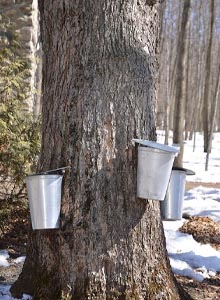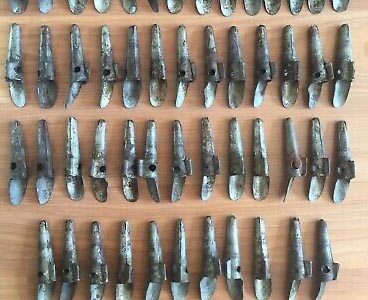How to Harvest Your Own Maple Syrup
Harvesting Your Own Syrup Is a Lot Easier Than You Think
It’s true that in this era of globalization and widespread transport, you can find all sorts of unique items at the local grocery store. Still, even the most premium organic products can’t compare to the experience of growing or sourcing your own food. Most people are familiar enough with modest gardens yielding a steady supply of tomatoes, cucumbers, and other sorts of vegetables. But have you ever considered getting your own maple syrup?
Where Does Maple Syrup Come From?

Maple syrup is derived from the sap of sugar maple trees. The sap is harvested in the spring once the snow has melted and it’s warm enough for the sap to flow. Once collected from the trees, the sap is cooked down into a thick, delicious syrup ready to be poured onto pancakes and waffles and any other sweet treats you can imagine. Often, companies that produce maple syrup have large tracts of land packed with sugar maples, but they’re not the only ones that tap trees. If you happen to have a maple tree in your yard, you could be enjoying your own naturally sourced maple syrup. In fact, according to research published by Penn State, trees growing in an open environment, like the ones along roads or in lawns, yield sweeter sap than those in the forest, and more of it.
Identifying a Sugar Maple Tree
There are a few things you look out for to determine whether you have a maple tree growing nearby. First, examine the bark. While the texture on the bark of a maple tree can vary, depending on the tree’s age, if it looks diamond-shaped or blocky, then it’s not a maple tree. Next, look at the branches of the tree. Maple trees bud in pairs, so you should be able to see the buds growing together along the branch. Additionally, maples are known for what’s called “opposite branching,” meaning that smaller branches grow in pairs pointing in opposite directions. If you’re particularly observant, you can try to determine the exact type of maple tree by the leaves. Sugar maple leaves are dark green on the outside, segmented into five sections, and will have smooth, U-shaped notches between the points. They also tend to grow to somewhere between 3-5 inches of length.
Tapping the Tree
 The process of extracting sap from a tree is generally referred to as “tapping.” Not only is it extremely easy for beginners, but it’s also completely harmless to the tree if done right. To get started, you’ll need a drill, a hammer or mallet, and a spout. You’ll also need some sort of collection container to catch the sap. Try to find something that can be easily covered to avoid debris falling in.
Once you have all the supplies you need, the next step is picking the right time. Aim for a time of year when the temperature is regularly above freezing in the day and below freezing at night, usually around February or March.
You’ll start by drilling a hole into the tree about one and a half inches. You should begin to see sap oozing out of the hole right away. Next, insert the spout into the hole and use your hammer to tap it into place. Be gentle at this stage; the spout just needs to be secure, and driving it further in than necessary can damage the tree. Finally, attach your collection container, and then wait for the magic to happen!
The process of extracting sap from a tree is generally referred to as “tapping.” Not only is it extremely easy for beginners, but it’s also completely harmless to the tree if done right. To get started, you’ll need a drill, a hammer or mallet, and a spout. You’ll also need some sort of collection container to catch the sap. Try to find something that can be easily covered to avoid debris falling in.
Once you have all the supplies you need, the next step is picking the right time. Aim for a time of year when the temperature is regularly above freezing in the day and below freezing at night, usually around February or March.
You’ll start by drilling a hole into the tree about one and a half inches. You should begin to see sap oozing out of the hole right away. Next, insert the spout into the hole and use your hammer to tap it into place. Be gentle at this stage; the spout just needs to be secure, and driving it further in than necessary can damage the tree. Finally, attach your collection container, and then wait for the magic to happen!
